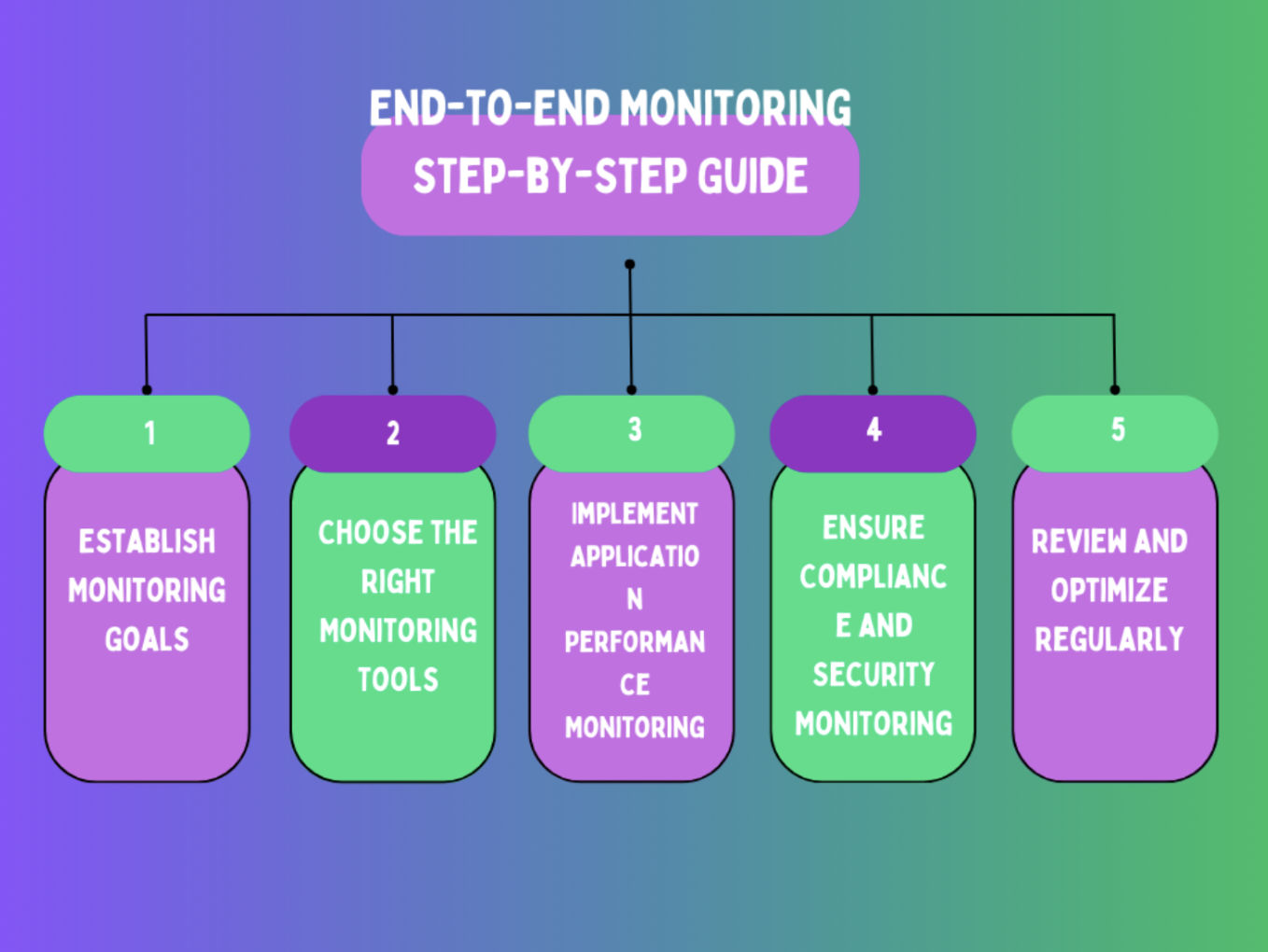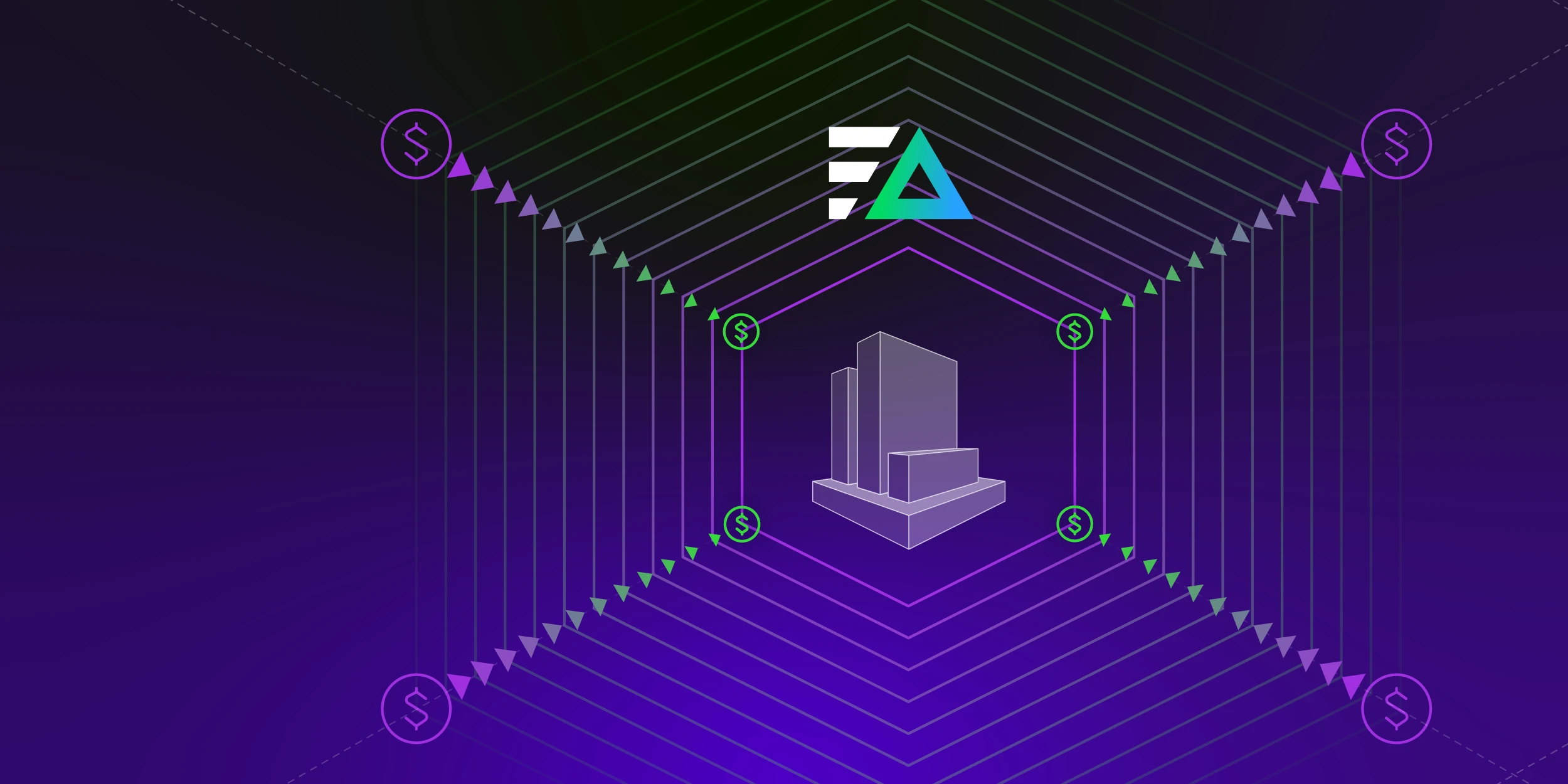What Is End-to-End Monitoring: Key Benefits, Challenges, and Practical Solutions
At its core, end-to-end monitoring refers to the process of monitoring an application across its entire life span. It involves capturing data (from an observability perspective, logs metrics and traces) from different areas within the application environment, to generate a holistic view of how the system is performing. It provides complete visibility, assists with performance optimization, and permits proactive issue detection to ensure a stable and dependable infrastructure environment.
This article will discuss what end-to-end monitoring looks like in practice, why it matters, and how to solve common challenges that come up during the implementation process.
Key Takeaways
- End-to-end monitoring provides a holistic view of environments like IT systems, enabling organizations to understand and optimize component interactions.
- Proactive issue detection reduces downtime and upholds high service quality by enabling early detection and resolution of potential issues.
- To ensure ideal resource allocation and system performance, continuous tracking and analysis help locate inefficiencies and bottlenecks.
- Securing IT infrastructure requires robust security protocols and compliance management, which are components of effective monitoring.
- Addressing the skill gap through training is crucial for the effective installation and management of end-to-end monitoring systems.
What is End-to-End Monitoring?
End-to-end monitoring is a holistic approach for tracking the performance, availability, and health of application infrastructure, from user interactions to back-end services. It guarantees the seamless and effective operation of every system component. Additionally, it helps ensure that all components of modern distributed environments work in unison to provide a seamless user experience, allowing for proactive issue detection and performance optimization. This holistic approach is essential for sustaining business continuity, guaranteeing customer satisfaction, and maintaining excellent service quality.
Key Benefits of End-to-End Monitoring
Comprehensive Visibility
End-to-end monitoring provides an extensive overview of the entire IT ecosystem, allowing organizations to see how various components interact and impact one another. This visibility is crucial for understanding the full impact of any performance issues and for making informed decisions on infrastructure enhancements.
Unified monitoring platforms can handle this complexity by providing integrated analytics and centralized dashboards. These features enable IT teams to monitor the entire infrastructure ecosystem from a single pane-of-glass.
Proactive Issue Detection
One of the primary advantages of end-to-end monitoring is its capacity to detect potential issues before they become serious. By identifying anomalies and irregularities early, IT teams can minimize downtime and maintain high service quality.
Modern IT systems create vast amounts of data, which can result in data overload, making it challenging to detect and resolve potential issues promptly. By offering intelligent analysis and anomaly detection, AI and machine learning technologies can assist in managing data overload.
Performance Optimization
End-to-end monitoring helps in the detection of bottlenecks and inefficiencies by continuously monitoring and evaluating the performance of every system component. The IT team may use this data to ensure that applications function properly, improve system performance, and allocate resources as efficiently as possible.
Integrating various end-to-end monitoring tools and systems often results in data silos, where crucial data is isolated, restricted, and challenging to access collectively. Observability pipeline tools can improve the integration of various monitoring systems by dismantling data silos and optimizing workflows.
Compliance and Security
Effective compliance and security management may be hampered by the frequent lack of skills in the implementation and maintenance of end-to-end monitoring. Skill development and training are crucial to addressing this challenge. Organizations should invest in retraining their IT staff in end-to-end monitoring procedures and equipping them with the skills and resources required to ensure robust security and compliance.
The step-by-step guide for setting up end-to-end monitoring is provided in the next section.

Implementing End-to-end Monitoring
Implementing end-to-end monitoring is a comprehensive process that ensures your IT infrastructure, apps, and user experiences are thoroughly monitored and optimized. Below is a step-by-step guide to help you set up effective end-to-end monitoring.
Establish Monitoring Goals
Set priority for the most important routes to guarantee fast response times, stable revenue, and stable conversion rates. Take action by deciding what in particular requires monitoring, like user experience or application performance. To ensure that the monitoring effort supports overall business success, align monitoring goals with business objectives.
Choose the Right Monitoring Tools
Take action by choosing the tools that best suit your requirements. To prevent data silos, choose solutions with integration features. Utilize E2E monitoring on live systems to gauge real-world user satisfaction. Comparing this to testing at previous stages yields results that are both more accurate and valuable.
Implement Application Performance Monitoring (APM)
Take action by monitoring your application’s response times, error rates, and transaction details. Enable distributed tracing as a best practice to obtain a comprehensive view of all transactions across all services.
Ensure Compliance and Security Monitoring
When it comes to testing account management, compliance is vital. To avoid unwanted access, don’t distribute test credentials too widely. Additionally, monitor for compliance with security best practices and legal requirements. To adjust to new laws and threats, monitor policies regularly and update them.
Review and Optimize Regularly
Continuously review monitoring data and adjust your tactics as needed. To find opportunities for improvement, conduct audits and performance evaluations regularly.
Challenges and Solutions in Implementing End-to-End Monitoring
To provide thorough and efficient monitoring, modern IT infrastructures must address several key challenges when implementing end-to-end monitoring. Here is a brief table of common challenges faced when implementing end-to-end monitoring, along with potential solutions:
| Challenge | Description | Solution | Benefit |
|---|---|---|---|
| Complexity of IT environments | This complexity makes it challenging to maintain a unified view of the system’s interactions and performance. | Deploy centralized monitoring systems that are capable of integrating and centralizing data from various systems. | Improved visibility throughout the entire IT ecosystem. |
| Data Overload | It can be challenging to identify crucial issues from noise when using overloaded traditional monitoring systems. | Use machine learning and AI tools to conduct intelligent analysis on large datasets. | Enhanced data insights enable the prompt identification of significant events. |
| Tool Integration | Effective monitoring and response might be hindered by data fragmentation and information silos. | Utilize data pipeline, orchestration and automation tools to combine several monitoring datasets into a unified solution. | Increased efficiency through reduced manual labor. |
| Skill Gaps | IT teams that lack specialized skills can lead to potential gaps in their monitoring efficacy. | Invest in the IT team’s continuous learning and skill-building. | Ensures that the IT team has all they need to handle challenging monitoring tasks. |
Complexity of IT Environments
Modern IT infrastructures are extremely complicated, featuring a combination of distributed architectures, hybrid clouds, on-premises systems, and microservices. This diversity can complicate efforts to keep an accurate and consistent view of the entire IT landscape.
Deploy centralized dashboards and analytics tools by integrating data from every component of the IT environment with unified monitoring systems. These systems ought to have strong features for compiling and evaluating data from various sources. This method enables better integration of various components by improving visibility into the entire IT environment.
Data Overload
Modern IT settings generate a vast amount of data, making it challenging to identify crucial issues among the noise. The amount of data coming in from various sources may be excessive for traditional monitoring systems to handle.
Manage and analyze massive datasets by leveraging AI and machine learning technology. These advanced tools can automate the detection of anomalies and provide intelligent insights into the data, helping to identify patterns and trends that could indicate underlying problems.
Optimized data insights and responsiveness allow IT teams to identify and handle significant events promptly. These solutions ease the burden of manual data analysis and allow for more proactive IT environment management by focusing on critical issues.
Tool Integration
Several companies utilize various monitoring technologies, each of which focuses on a different area of the IT infrastructure. This might result in information silos and fragmented data, which makes it difficult to obtain an overall view of the functionality and health of the system. Orchestration and automation tools are used to combine several monitoring systems into a unified, coherent system. These technologies ensure that data from various sources is combined seamlessly by automating data collection, correlation, and analysis.
Streamlined processes and improved data integration lead to increased productivity and decreased manual labor. A unified view of the system’s performance enhances decision-making and enables faster responses to issues, reducing downtime and increasing overall system reliability.
Skill Gaps
Specific expertise and skills needed for effective end-to-end monitoring might not be present in every IT team. This may result in oversights in the administration and application of monitoring solutions, which could compromise their overall efficacy. Invest in IT team training and skill development. Make training materials, workshops, and certification courses on end-to-end monitoring techniques and technology accessible.
Ensuring that IT teams possess the necessary skills results in enhanced monitoring solution installation and management. This results in better system performance, increased dependability, and the assurance to tackle challenging monitoring.
Conclusion
End-to-end monitoring has completely transformed the way that businesses optimize and manage their digital operations. It facilitates proactive management by offering thorough visibility across all system components, ensuring seamless and effective operations. In the constantly changing digital landscape, this competence puts organizations in a position to stay resilient, competitive, and flexible.
FAQs on What Is End-to-End Monitoring
What is end-to-end monitoring?
End-to-end monitoring, sometimes referred to as digital experience monitoring, is the process of evaluating data from infrastructure, devices, apps, and services to get an overall view of digital environments.
What is the end-to-end monitoring dashboard?
The end-to-end monitoring dashboard provides you with a comprehensive overview of all infrastructure, application, and network transactions conducted within your IT ecosystem.






